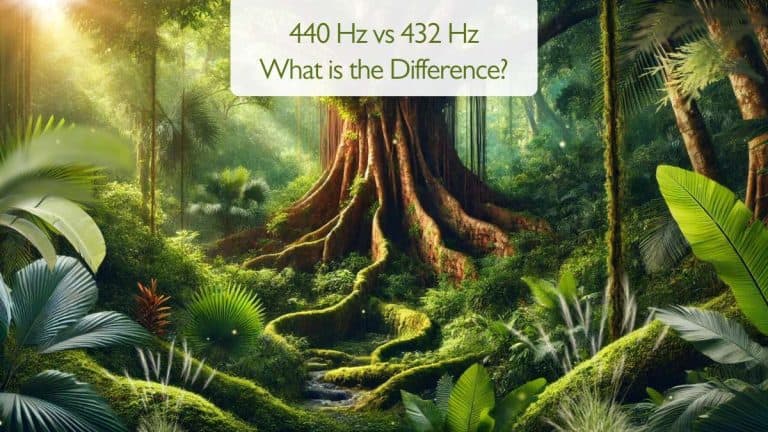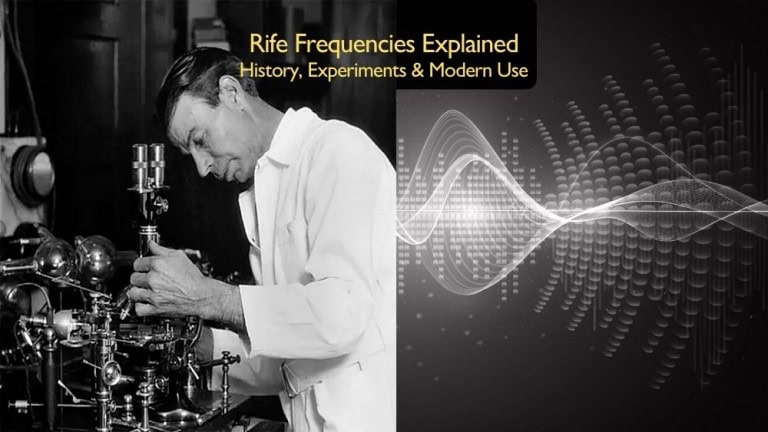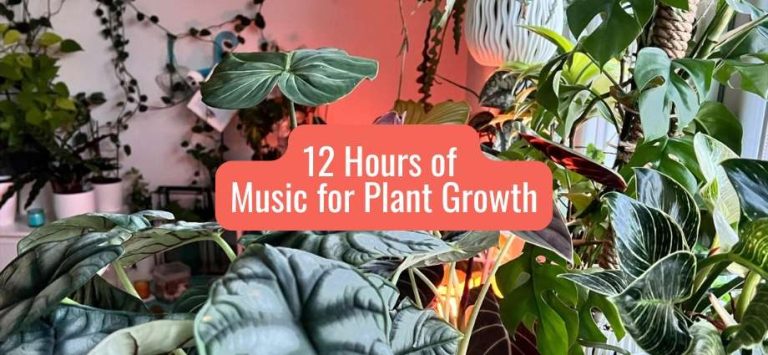440 Hz vs 432 Hz: What’s the Difference & Which Is Better?
The debate about 440 Hz vs 432 Hz has fascinated musicians, scientists, and even plant lovers for decades. These two tuning standards may sound similar, but their effects reach far beyond music – influencing emotional balance, mental well-being, and possibly even plant growth.
In this article, I break down the real history and science behind 440 Hz vs 432 Hz, share my personal experiments, and explain why many people feel that 432 Hz creates a more natural and harmonious vibration for both humans and plants.
432 Hz vs 440 Hz: Quick Comparison Table
| Feature | 432 Hz | 440 Hz |
|---|---|---|
| How it sounds | Softer, warmer, more natural | Sharper, brighter, more intense |
| Emotional effect | Calming, grounding, relaxing | Neutral, sometimes more “tense” |
| Connection to nature | Linked to the Golden Ratio & Schumann resonance | Not associated with natural vibration patterns |
| Use in music | Meditation, healing music, relaxation & plant music | Worldwide industry standard for all genres |
| Listener preference | Often described as harmonious & soothing | Familiar, but not always relaxing |
| Plant response | Positive growth response in experiments | Neutral or no consistent effect |
This simple comparison helps explain why so many musicians, healers, and plant lovers explore the difference between these two tunings.

What Is 440 Hz vs 432 Hz? Understanding the Basics
The 440 Hz frequency is the modern international standard for tuning musical instruments, meaning the note A above middle C vibrates at 440 cycles per second. It became widely adopted in the mid-20th century, especially after a 1955 international agreement standardized it.
In contrast, 432 Hz is an alternative tuning frequency that many believe resonates more closely with natural vibrations found in nature and the universe. It is closely linked to the Earth’s natural electromagnetic frequency, the Schumann Resonance, approximately 7.83 Hz, and is often described as a “healing” or “cosmic” frequency.
If you’re curious about how the Earth’s own frequency might affect your plants, check out my full article Schumann Resonance for Plants – The Earth’s Natural Frequency.
When and Why Did the Standard Change from 432 Hz to 440 Hz?
Before the mid-1900s, there was no global standard for musical pitch. Different orchestras and regions tuned to various frequencies, with many historical sources suggesting tuning near 432 Hz.
The shift to 440 Hz occurred largely in the early 20th century due to industrial standardization efforts, culminating in its adoption by the International Organization for Standardization (ISO) in 1955. Some theories suggest that the change was influenced by political and commercial interests, favoring a brighter and more assertive tuning.
Despite this, many musicians and researchers advocate for the natural harmony of 432 Hz and believe a return to this frequency benefits listeners and the environment.
Effects of 440 Hz vs 432 Hz on Human Health and Mind
- 440 Hz music is often described as precise and bright. Some listeners find it less relaxing, with a more “clinical” feel. Scientific opinions vary on its effects, but it remains the musical industry standard.
- 432 Hz music is reported to be more calming, warm, and harmonious. Studies suggest it can reduce anxiety, promote relaxation, and encourage brainwave states associated with meditation and peace.

Why Many People Prefer 432 Hz Over 440 Hz
Even without scientific bias, blind listening tests consistently show that more people describe 432 Hz music as:
- warmer
- smoother
- more peaceful
- more emotionally balanced
This may be because 432 Hz creates a wave pattern that the brain interprets as more harmonious, similar to natural frequencies found in the environment.
Listeners often report:
- reduced anxiety
- deeper breathing
- easier meditation
- improved focus
This aligns closely with the experiences of plant growers who notice healthier, more vibrant growth when using 432 Hz music regularly.
How 432 Hz Affects Plant Growth
Plants are sensitive to vibrations and sound frequencies. Research, including work by Masaru Emoto, has shown that water exposed to harmonious frequencies like 432 Hz forms more coherent and beneficial molecular structures.
Since plants are mostly water, music tuned to 432 Hz may enhance photosynthesis, nutrient uptake, and overall plant vitality. In my own experiments, plants exposed to 432 Hz music demonstrated healthier growth and more vibrant foliage compared to those exposed to 440 Hz music or silence.
Click play below to experience the music converted in 432 Hz with Pure tone included:
Click here to watch the video on YouTube
Is 440 Hz Harmful or Bad for Plants or People?
A common question is whether 440 Hz is harmful.
The answer is no – 440 Hz is not harmful.
It simply became the tuning standard used worldwide in orchestras, studios, and modern instruments.
The preference for 432 Hz does not come from danger, but from the emotional and energetic experience it creates.
While 440 Hz is sharp, bright, and precise, 432 Hz feels more natural, smooth, and relaxing – making it a better fit for meditation, healing practices, and plant growth experiments.
My Personal Experience with 440 Hz vs 432 Hz
Through years of experimentation, I’ve found that music tuned to 432 Hz produces a noticeably more positive effect on both plants and people. The plants grow more robustly and exhibit healthier leaves, while the atmosphere feels more relaxed and balanced.
Switching from 440 Hz to 432 Hz tuning in my compositions changed not only the sound quality but also the energy in the room, creating a more natural and soothing environment for all living beings.
Practical Tips for Using 432 Hz Music in Plant Care
- Play 432 Hz music regularly in the spaces where your plants grow, especially during their active growing hours.
- Use specially tuned playlists or retune your favorite music with frequency adjustment software.
- I have a dedicated playlist on my channel called Music for Plants, featuring tracks tuned to 432 Hz designed specifically to promote plant health and growth. Feel free to explore it and see how your plants respond!
- Combine 432 Hz music with natural sounds like water flowing or birdsong to enhance harmony.
- Consistency is key: daily or frequent exposure maximizes benefits for plant health.enefits for plant health.
Debunking Common Myths About 440 Hz vs 432 Hz
- Myth: 440 Hz tuning is harmful or “bad.”
Fact: It’s an industry standard widely used worldwide, and individual responses to frequencies vary. - Myth: 432 Hz is a magical cure-all.
Fact: While it offers relaxing and harmonious benefits, it is not a medical cure and works best as part of holistic care. But it is a better choice, anyway 🙂
Frequently Asked Questions About 440 Hz vs 432 Hz
Is 432 Hz really better than 440 Hz?
Many listeners find 432 Hz more relaxing and harmonious, while others hear only a subtle difference. It depends on personal perception and sensitivity to sound. And yes, it is better.
Why did the world switch to 440 Hz?
440 Hz became the standard in the mid-20th century for consistency across orchestras, music schools, and manufacturers. Before that, many regions used tunings close to 432 Hz.
Is there scientific proof that 432 Hz is healing?
Scientific studies are limited, but early research shows that lower-frequency tuning, like 432 Hz, can promote relaxation, reduce stress, and improve mood.
Which frequency is better for meditation and plant growth?
Most people prefer 432 Hz for meditation because it feels calming and grounded.
Plant experiments – including mine – show stronger vitality when exposed to 432 Hz compared to 440 Hz.
Does 440 Hz negatively affect plants?
No. 440 Hz is not harmful. It simply does not show the same positive impact on plant growth as 432 Hz in most experiments.

Conclusion: Choosing Between 440 Hz vs 432 Hz for Your Wellbeing and Plants
Deciding between 440 Hz vs 432 Hz tuning depends on personal preference, scientific curiosity, and the kind of energy you want to cultivate. For a more natural, calming sound experience that benefits both humans and plants, 432 Hz is a compelling choice.
If you’re curious about how the subtle vibration of 432 Hz can influence both plants and people alike, check out my full article 432 Hz Frequency Explained: The Healing Sound That Transforms Plants and People.
Try listening to both frequencies and observe how they affect you and your plants. You may find 432 Hz music brings a new level of harmony to your space.
Related Articles You Might Enjoy
- 432 Hz Frequency Explained – The Healing Sound That Transforms Plants and People
- 528 Hz Frequency: The Miracle Tone for Healing Humans and Plants
- 369 Hz Frequency Explained – The Secret Behind Tesla’s Numbers
- Masaru Emoto Water Research: How Water, Music, and Vibrations Influence Plant Growth
- How Music Affects Plant Growth
- Electroculture for Houseplants – Harnessing Natural Energy for Stronger Growth
Explore More Music for Your Plants & Stay Connected!
Check out my Playlist: Music for Plants and find the perfect tunes to help your plants and yourself thrive.
Don’t forget to visit my YouTube Channel Plant House & Garden and subscribe — your support means the world to me!
Connect with me on social media for more plant care tips and music updates: Instagram | Facebook | X | Pinterest | Reddit | TikTok
Love plants? Love music? Don’t miss out on new updates — hit subscribe and follow now to keep your plants happy and your space vibrant!







